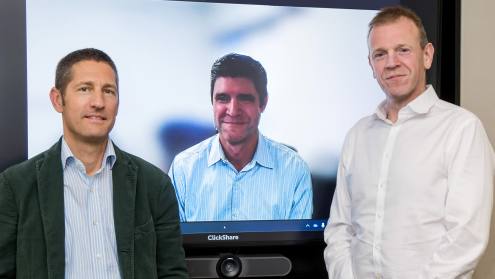In 2002, Japan’s financial authorities seemed to be doing the right, or perhaps the only possible, thing with its banks. But what emerged from a series of draconian measures designed to tame a five-year non-performing loan crisis now looks disturbingly like a banking industry that has permanently stalled.
The post-crisis sector is dominated today by three 'megabanks' (Mizuho Financial Group, Sumitomo Mitsui Financial Group and Mitsubishi UFJ Financial Group), a heavily protected trust bank sector, and a second tier of regional banks that are supposed to dominate lending in each of the country's 47 prefectures.
Editor's choice
- Background: The Bank of Japan must wake up and act
- Background: Poor conditions stymie Japanese momentum
Of the three, the megabanks in particular look to be pillars of stability rather than engines of growth, apart from their vital function of absorbing bonds issued by the world’s (proportionately) most heavily indebted public sector.
New life
Luckily, there is another side to the story. The good news is that a handful of interlopers from outside the financial sector, and an even smaller number of survivors from the years before the banking debacle, are fighting to breath new life into the system.
One of the outstanding cases in the survivors group is Shinsei Bank, a reincarnation of the defunct Long-Term Credit Bank of Japan (LTCB), which has experimented with an astonishing number of business models since it set up shop in 2000, but which now seems to be hitting its stride.
Shinsei lost money for two years running, after its then president, former Morgan Stanley managing director Thierry Porté, tried to turn a quick profit by shifting the focus of the bank’s business strategy to investing in structured financial assets on the eve of what turned out to be the 2008 financial crisis.
During the same period the bank went through a love affair with non-collateralised consumer lending that saw 83% of its consolidated ordinary business profit drawn from this sector in the year ending March 2010. That happened to be when the government was close to finalising a law drastically reducing the legal interest limit (from 29% to 20%) on consumer loans.
Changes at the top
Mr Porté departed Shinsei in November 2008 and was replaced as caretaker president by Masamoto Yashiro, the bilingual executive who had headed Shinsei for five years from 2000 when a consortium of foreign investors bought the defunct LTCB from Japan's government.
After his return in 2008, Mr Yashiro set about house cleaning. However, Shinsei’s loss of Y140.1bn ($1.7bn) for the year ending March 2010 forced him to step down in favour of an outsider. Shinsei’s choice was Shigeki Toma, who began his career at the Mizuho Financial Group, and moved to Isuzu Motors in 2002 to help with the truck manufacturer’s reconstruction.
Before departing, Mr Yashiro had prepared a 'medium-term' plan covering the three years ending in March 2013 which provided for a shrinkage of the controversial consumer loan division, as well as a the selling down of Shinsei’s financial portfolio. But Mr Toma’s appointment as president of Shinsei in June 2010 marked the start of a new era.
New era for Shinsei
Mr Toma’s revision to the 'Yashiro plan', published in September 2010, accelerated the exit from 'non-core' sectors of Shinsei’s business. More significantly, it provided the bank with an ambitious mission to help nurture new industries. For the first time, it also committed the bank to serving Japanese clients outside Japan through tie-ups with Asian partners.
Mr Toma’s initial stance was defensive, stressing cost-cutting and accelerating selling down of non-core assets. He was rewarded in March 2011 when Shinsei reported a net profit of Y42.6bn after two years of losses, and the bank resumed paying a dividend for the first time in three years.
That sounds impressive, but Mr Toma himself maintains the bank’s fiscal performance in 2010 was actually “not so superb”. The Y42.6bn profit was three times an earlier forecast, but a very large part of it (Y29.4bn) came from the profit Shinsei achieved by repurchasing preferred securities and subordinated debt at discount from the original issue prices.
The likely absence of anything similar this year to the preferred securities windfall means it could be tough to achieve the Y22bn profit figure the bank is forecasting for March 2012.
Year of transition
Mr Toma stresses that 2011-12 will in any case be “a year of transition”. He notes that until early 2011, the bank’s various departments were told to hold their ground but not to aggressively enter new business sectors. Within the past six months, he has told Shinsei’s various departments to “go on the offensive”.
Those four words were not just an invitation to everyone to try harder. When he took over the presidency in the summer of 2010, Mr Toma told an interviewer that he would “show the world in two years that Shinsei can survive” and the same amount of time to “justify its existence”. He now believes that he has got close enough to this target ideal to guarantee that “we will not fall back into the red”. How far this strategy has progressed should become clearer by the end of the 2012-13 business term when Shinsei aims to generate a profit of Y51.bn.
That is a big jump from the current year, which itself accounts for growth of nearly 50% over “ordinary business earnings” in 2010-11. But it is still far from where Mr Toma wants to take the bank during his period in office.
He believes it is essential for the bank to prepare the way for faster and steadier growth by restoring its institutional customer base after the losses it suffered during the stormy years before his arrival.
Shinsei currently has about 1000 institutional customers, a tiny fraction of the number served by its predecessor, the LTCB. The idea, says Mr Toma, is not to recover lost LTCB customers, which consisted mainly of mature companies that are now mostly self-financing.
New customer base
Mr Toma is aiming to build a new customer base by promoting the growth of new industries that he believes other banks are not supporting. These include healthcare, care of the elderly and production of energy-saving products.
The list of newcomers to such industries will be mainly small- to medium-sized-companies, but Mr Toma thinks that many of them could grow spectacularly as Japan moves to create the welfare and environmentally conscious society.
He is not worried that the megabanks will try to acquire customers at the edge of his chosen sectors, believing they are too closely involved with their current large clients in mature industries to have much time for newcomers. He is also convinced that many of the businesses Shinsei wants to support will require deregulation because they will be in sectors that were managed by the government until recently.
Surprisingly for the president of a fairly small bank, Mr Toma thinks he can help here. Shinsei has a line to some government departments because of its history as a successor bank to the LTCB and because it starts out with the advantage of not being the main bank of a keiretsu, or diversified group of commercial industrial companies.
The three megabanks are all linked to keiretsu and can thus hardly avoid talking their own book when they discuss regulatory issues with the government. With assets of Y10,200bn, Shinsei is about one-twentieth the size of the biggest megabank, but its hands are free.
Plans for the retail sector
Mr Toma has other priorities for Shinsei besides lending to companies in emerging sectors. He is deeply interested in the plight of regional banks that, particularly in remoter parts of Japan, suffer from a dearth of borrowers with loan/deposit ratios of 50% or less.
While Mr Toma seems vague about solutions to this problem, he is very close to home in wanting to provide high quality investment advice to the bank’s 2.5 million retail banking customers, many of whom are retirees who belong to his own baby boom generation (Mr Toma is 62 years old).
His idea is to supplement Shinsei’s modest branch network of 44 branches with “consulting spots”, 10 of which will open this fiscal year. Mr Toma says that Shinsei provides advice on products but not investment strategy.
A striking addition to Toma’s list of fresh initiatives came in late June when Shinsei announced that it would be transferring most its remaining consumer finance business from Shinsei Financial, a wholly owned subsidiary, to the bank itself. The change will make Shinsei the first bank to offer uncollateralised loans directly to individuals through a large scale network of unmanned outlets.
Shinsei could act rapidly on the consumer finance issue because it holds an indemnity on claims for reimbursement of interest payments exceeding 20% which were retroactively banned when the consumer finance business was reformed in 2006. Shinsei extracted the indemnity when it bought the Lake consumer finance business from General Electric two years after the reform. The new service, due to start on October 1, requires approval from the FSA, but the agency has already been consulted and is known to favour more direct lending by banks to individuals.
With the number of strings Mr Toma has added to the bank's bow and a successful issue of Y71.8bn-worth of common shares in March 2011, Shinsei might seem to be a bank with a solid present as well as an intriguing future.
But Mr Toma says that Japan's Financial Services Agency (the government agency that regulates all financial institutions) still regards Shinsei as “fragile”, though he is certain it has given up the idea of trying to merge it with Aozora Bank, another successor to a failed long-term credit bank whose business strategies differ radically from Shinsei.
International leanings
What remains on Mr Toma’s to-be-done list is to add an international dimension to Shinsei’s business in addition to the three outline business collaboration agreements with banks in Asia that were signed in 2010.
Shinsei already has a higher ratio of overseas foreign employees than even the largest of the megabanks, but numbers have been declining gradually as foreigners depart to work in bigger and richer institutions.
Once his project for nurturing new business and industries has taken root, Mr Toma’s next ambition is likely to be to reverse this trend and make the bank at least as international as the some of the clients it seeks to serve.











